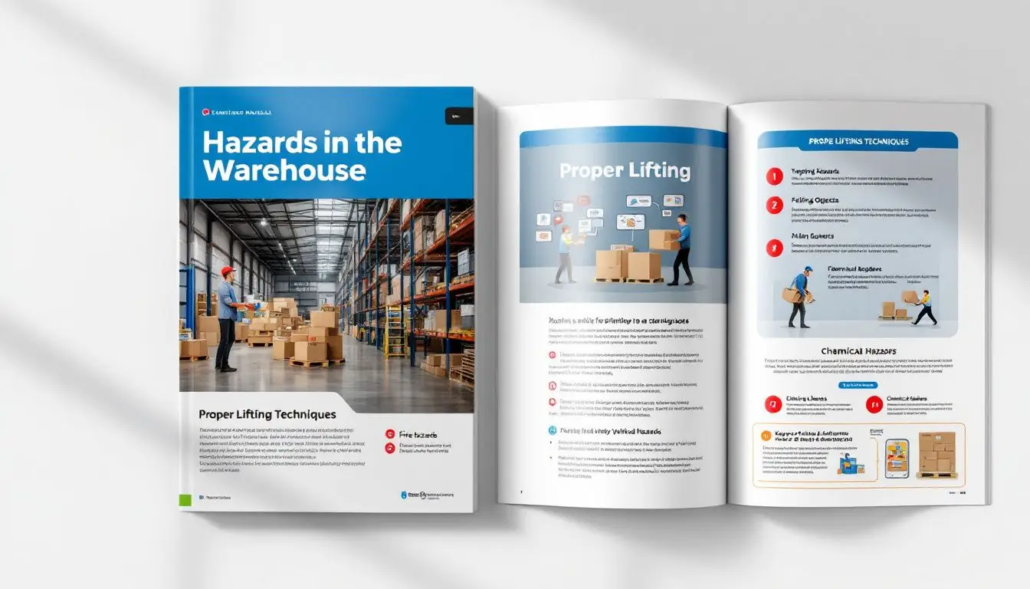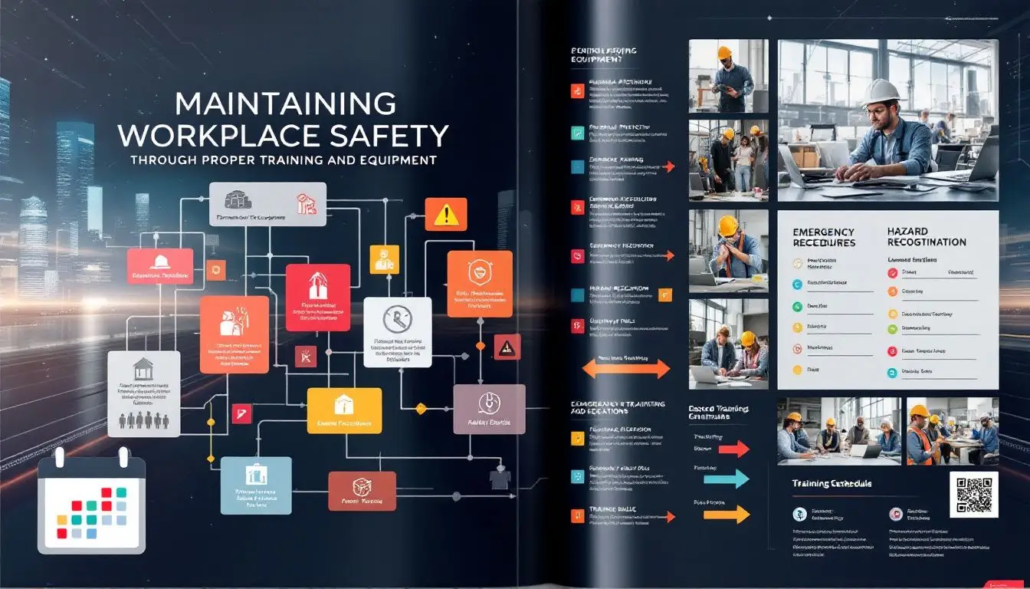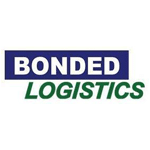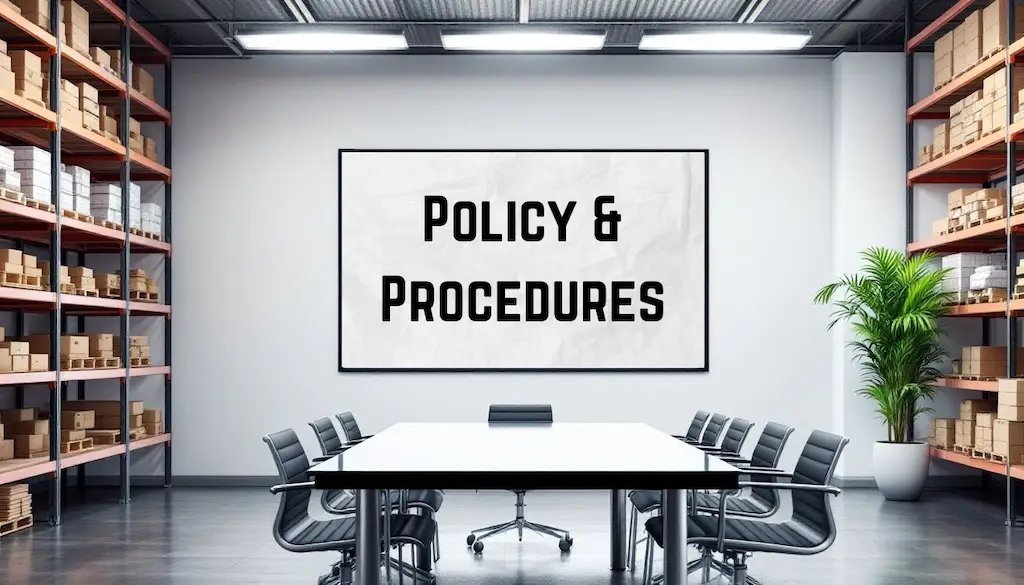Effective Warehouse Policies and Procedures
Clear warehouse policies and procedures ensure a safe and efficient workspace. This guide covers the importance of these policies, developing effective practices, and implementing safety measures. It also discusses identifying safety hazards, training warehouse staff, and using technology to enhance operations.
Key Takeaways
- Effective warehouse policies enhance safety, reduce accident rates, and boost operational efficiency.
- Comprehensive training and employee involvement are essential for successful implementation of safety measures and hazard identification.
- Utilizing technology, such as Warehouse Management Systems, streamlines operations and improves compliance with safety standards.
Importance of Warehouse Policy and Procedures
Warehouse operations hinge on the meticulous implementation of policies and procedures. A well-defined warehouse safety policy not only protects warehouse workers but also reduces potential lawsuits and enhances the business’s reputation as an industry leader. A safe workplace boosts morale, increases productivity, and minimizes accidents, creating a more efficient and harmonious warehouse environment.
Clear warehouse standards and procedures prioritize safety and operational efficiency. The warehousing industry is plagued by a higher rate of fatal injuries compared to other sectors, making compliance with safety regulations not just beneficial but critical. The consequences of neglecting safety can be severe, including liabilities, lawsuits, and frequent accidents, all of which disrupt operations and inflate costs. Effective warehouse policies are essential for streamlining operations, ensuring timely deliveries, and maintaining high levels of customer satisfaction.
The efficiency of a warehouse operation has a significant impact on the supply chain. It affects the speed, accuracy, and cost-effectiveness of the entire process. Simple guidelines in warehouse operations can greatly reduce operational costs and increase overall efficiency. By integrating safety measures and improving warehouse layout, businesses can optimize space utilization and inventory control, leading to smoother operations and better service delivery.
Developing Comprehensive Warehouse Policies
Comprehensive warehouse policies are the cornerstone of effective warehouse management. This process involves not only the management of physical space but also the oversight of daily operations, including the receiving, storing, and shipping of goods. The receiving process requires meticulous checks to verify orders against purchase orders, ensure quality standards, and account for all items.
Analyzing workforce needs, focusing on retention, recruitment, and training, and ensuring efficient resource allocation are crucial aspects of warehouse operations. Employee involvement, including warehouse employees, in formulating safety policies can lead to greater ownership and smoother implementation. Improved operations and an efficient warehouse layout can reduce the distance goods need to be moved, enhancing efficiency.
Effective communication of the safety policy can be achieved through safety awareness training, ensuring all personnel understand specific tasks and general safety descriptions. A comprehensive safety policy should cover all aspects of warehouse work, including handling and storage of goods, to create a safe environment.
Identifying Potential Safety Hazards

Identifying potential safety hazards is a proactive step towards ensuring a safe workplace. Common safety hazards include:
- Improper stacking of goods
- Trip hazards from cluttered aisles
- Falling injuries from elevated platforms or high shelves
- Transportation incidents, particularly involving forklifts, due to insufficient driver training
Regular safety procedures tours can help in noting these potential hazards and addressing them promptly.
Handling hazardous chemicals in a warehouse poses significant risks. Improper handling can lead to severe consequences such as chemical burns, carcinogenic exposure, and respiratory distress. Additionally, serious accidents can occur from elevated platforms, docks, and loading bays, highlighting the need for stringent safety measures. Ensuring aisles and exits are kept clear is crucial for preventing trip hazards and ensuring safe evacuation during emergencies.
To create a safe working environment, it is essential to identify and mitigate these potential dangers. Implementing a warehouse safety checklist can help in systematically addressing these hazards and ensuring compliance with safety standards. Vigilant and proactive warehouse managers can significantly reduce the risk of accidents and create a safer workplace for all employees.
Implementing Safety Measures

Robust safety measures are crucial for maintaining a safe warehouse environment. Training programs effectively mitigate various safety risks for warehouse personnel. Adequate training ensures employees are well-versed in safety protocols and can handle potential hazards confidently. Personal protective equipment (PPE), such as gloves, goggles, and safety knives, is essential for preventing injuries during warehouse operations.
Regular safety audits and inspections maintain a safe workplace. These inspections should include safety equipment checks and compliance reviews to ensure that all safety standards are met. General safety measures, such as clear access to emergency exits and proper ergonomic practices, are also crucial for ensuring workplace safety.
Additionally, safeguarding equipment and implementing proper handling procedures can prevent accidents and injuries. Focusing on these warehouse safety measures allows warehouse managers to create a healthy working environment that protects workers and enhances overall efficiency.
Creating a Warehouse Safety Program

A comprehensive warehouse safety program ensures workplace safety and compliance. A Hazard Communication program is crucial for warehouses dealing with hazardous materials. This program informs workers about hazardous chemicals and the safety protocols required to handle them safely.
Fire safety plans and Emergency Action Plans (EAP) are critical components of safety programs. These plans guide employees on how to respond during emergencies, such as fires, ensuring a prompt and organized evacuation. Emergency preparedness plans should include clearly marked exits and trained personnel on emergency procedures to minimize the impact of safety incidents.
Regular drills and clear communication protocols ensure effective emergency response. Incorporating simulations in training helps personnel gain practical understanding and prepare for real-life scenarios. Establishing a comprehensive safety program tailored to specific operational needs can help identify hazards and implement effective solutions.
Establishing Proper Handling and Storage Procedures
Proper handling and storage procedures maintain a safe and efficient warehouse environment. Standard Operating Procedures (SOPs) ensure uniformity in operational tasks. These SOPs should include processes for receiving inventory, managing stock levels, and ensuring safety protocols are followed.
Clear aisles and pathways prevent slip and trip hazards. This also ensures safe evacuation during emergencies. The safe handling of hazardous chemicals involves maintaining proper labeling and safety data sheets to prevent exposure and accidents.
Organized and labeled storage areas facilitate easy access and prevent items from tipping over. Quality control is supported by a checklist that verifies every operational step, minimizing errors and ensuring a smooth workflow.
Training Warehouse Personnel
Training personnel ensures safety and efficiency in warehouse operations. Regular training programs prevent injuries and ensure adherence to safety standards. These programs should combine theoretical knowledge and practical application to reinforce safety protocols.
Training methods like visual aids, simulations, and eLearning platforms simplify the training process and engage employees effectively. Digital safety training allows for quick onboarding of new employees and repeat training for non-compliant workers.
Ongoing training exercises ensure continued compliance and knowledge retention. Forklift operators and workers handling cutting tasks must receive thorough training to prevent accidents and injuries.
Utilizing Technology for Warehouse Management
Technology significantly improves efficiency, productivity, and safety in warehouse management. Warehouse Management Systems (WMS) optimize inventory management, order fulfillment, and overall operations. These systems enhance efficiency and accuracy in warehouse processes.
WMS can include technologies such as barcode scanners, RFID readers, and voice recognition software, which automate critical warehouse operations like receiving, storing, and picking products. The integration of WMS with other systems, such as ERP, creates a more cohesive and efficient supply chain operation.
Effective WMS solutions often feature reporting and analytics tools that help assess warehouse performance and ensure compliance with SOPs. Leveraging these technologies helps warehouse managers optimize space, reduce labor, and prevent costly errors, leading to significant savings in enterprise resource planning.
Maintaining Workplace Safety

Regular audits and inspections identify potential hazards and ensure compliance with safety protocols. Regular inspections of exit routes and adherence to fire prevention plans maintain safety in warehouse operations. Addressing unsafe conditions before work begins prevents accidents and injuries.
Systematic inspection and maintenance of shelving and racking systems are crucial to prevent collapses that may injure workers. Maintaining warehouse equipment through regular inspections ensures safety and functionality.
A clean workspace reduces safety hazards and ensures safer workers. Effective employee training and regular refresher courses keep employees updated on safety protocols and worker safety and industry standards, reducing workplace injuries and associated costs.
Record Keeping and Compliance
Routine inspections and accurate record-keeping ensure compliance with safety regulations and improve operational safety. Documentation practices should include safety incident reports, inspection logs, and training records for effective oversight. Accurate record-keeping protects businesses during audits and customer inquiries by providing clear evidence of compliance.
A robust Warehouse Management System (WMS) can facilitate compliance with regulations by maintaining accurate records and simplifying reporting processes. Training programs help meet legal requirements set by safety regulatory agencies, thus protecting the company from liabilities.
Summary
In summary, developing and implementing comprehensive warehouse policies and procedures is essential for creating a safe and efficient warehouse environment. By identifying potential safety hazards, implementing safety measures, and utilizing technology, warehouse managers can significantly improve workplace safety and operational efficiency. Regular training and proper record-keeping further ensure compliance with safety regulations. By following these guidelines, businesses can protect their employees and enhance overall warehouse performance.
Ready to Optimize Your Warehouse Operations?
At Cadre Technologies, we provide cutting-edge warehouse management solutions that enhance safety, efficiency, and compliance. Our Warehouse Management Systems (WMS) streamline operations, reduce risks, and keep your business running smoothly.
🔹 Increase Productivity
🔹 Improve Safety & Compliance
🔹 Optimize Inventory Management
Let’s build a safer, smarter, and more efficient warehouse together. Contact us today to learn how Cadre Technologies can transform your warehouse operations!
Frequently Asked Questions
Why are warehouse policies and procedures important?
Warehouse policies and procedures are vital for ensuring workplace safety, enhancing employee morale, and improving productivity. They also play a key role in compliance with regulations, ultimately safeguarding the organization’s reputation.
How can I identify potential safety hazards in my warehouse?
To identify potential safety hazards in your warehouse, conduct regular safety tours and audits to pinpoint issues such as improper stacking, trip hazards, and risks related to forklift operations. Additionally, ensure proper handling of hazardous chemicals and maintain clear aisles to enhance workplace safety.
What are some key components of a warehouse safety program?
A key component of a warehouse safety program is the implementation of a Hazard Communication program along with fire safety plans and Emergency Action Plans (EAP). Regular drills and clear communication protocols are essential for efficient emergency response.
How can technology improve warehouse management?
Technology significantly enhances warehouse management by optimizing inventory control and order fulfillment through Warehouse Management Systems (WMS) and automation tools like barcode scanners and RFID readers. This integration improves operational efficiency, accuracy, and safety throughout the supply chain.
What is the role of record-keeping in warehouse safety?
Effective record-keeping plays a crucial role in warehouse safety by ensuring compliance with safety regulations and providing necessary documentation for audits. It includes maintaining safety incident reports, inspection logs, and training records, which collectively enhance safety measures and operational transparency.









